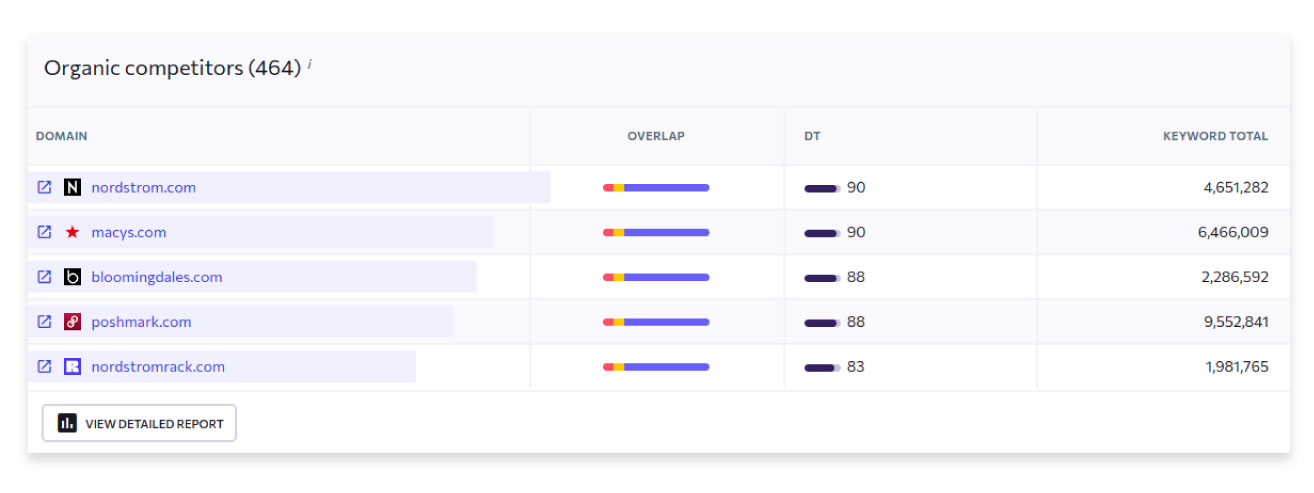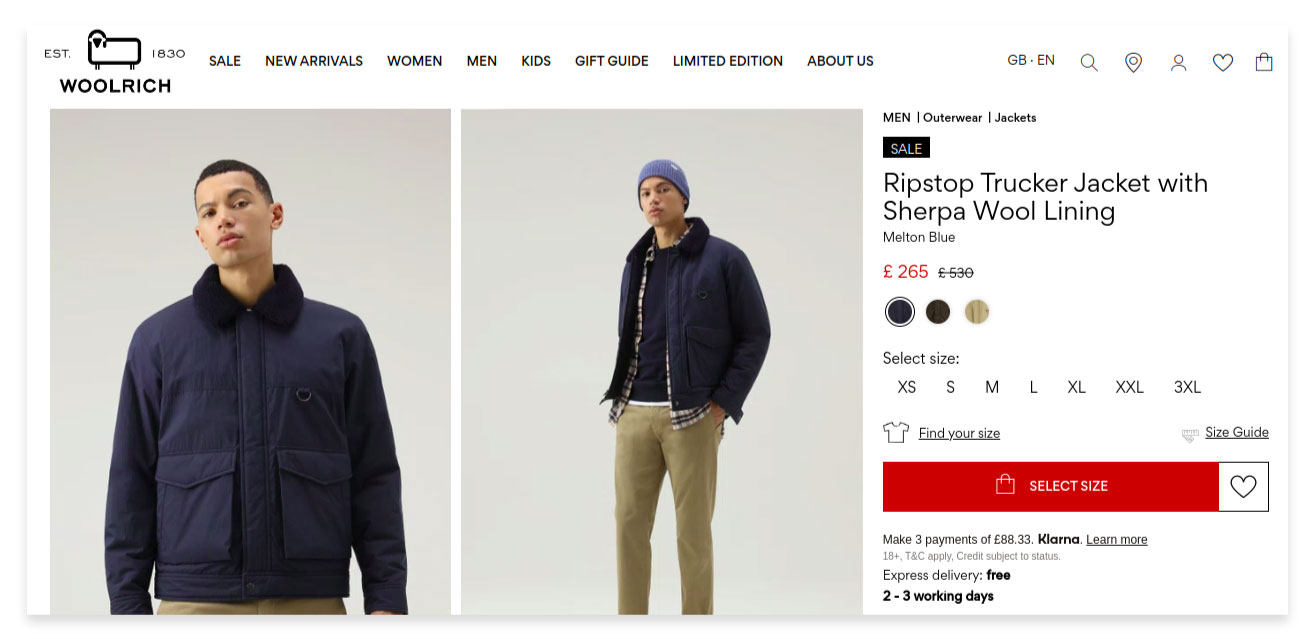Do customers remember your store or only the products they bought there? For the majority of eCommerce businesses, the answer to this question is neither.
Apart from a few tweaks in a WordPress theme or a personal touch in email communication, the looks and the messaging most eCommerce companies present are fairly similar. It’s no surprise that it takes so much effort to win new customers.
What you can do to stand out from the crowd is transform your business from just another website into a brand. Show that you’re different and that shopping with you has some intrinsic value.
Follow this guide to learn what brand identity is and how to create one for your eCommerce business.
What is Brand Identity?
Brand identity is the visual and verbal elements of a brand that distinguish it from its competitors. Your brand logo is one of the most important elements of brand identity, You should choose your logo maker or logo designer wisely as it’s often the first association people have with your store. So is the general color scheme and design of the website.
The tone of voice you use throughout the website, and marketing messaging contribute to your overall brand identity as well.
Depending on what your eCommerce store sells and what your positioning is, your brand identity may be strict and professional, informal and friendly, or anything in between.
What brand identity brings to eCommerce
Some eCommerce store owners believe that branding isn’t essential for small businesses and only works for large corporations. However, that’s far from the truth. Even a new store can benefit from having a strong brand identity, which can translate into better sales.
E-commerce branding is important for all businesses because it sets them apart from the competition. While other stores will look the same, yours will look different and be more likely to be remembered by users. E-commerce branding will never be more important than the products you sell or good customer service, but once you have those elements figured out, branding is essential.
If you manage to align your brand identity with what customers expect, you can expect improved customer engagement purely due to emotional appeal. For instance, professional messaging from a medical vet supply store or friendly and upbeat messaging from a pet shop can attract consumers. Aligning brand values with customer values serves a similar purpose.
Remembering the store by branding identity is also crucial for retargeting advertising. If users don’t remember your store, they’ll be less likely to respond to retargeting campaigns.
Furthermore, consistent branding can potentially increase sales by up to 20%. Considering that it won’t set you back much from creating a strong eCommerce branding strategy, it’s a worthwhile investment.
How to establish an eCommerce brand identity
A good eCommerce branding strategy isn’t developed in a single day. It takes a bit of customer research and brainstorming before you end up with great brand identity guidelines. Here’s where you start.
Define your identity
To define your brand identity, you first need to understand how people view your brand now and how you want it to be viewed in the future.
The first bit may take some research. Start by asking your colleagues and employees how they view the brand. You can ask questions like:
- What words come to mind when you’re thinking of our brand
- What message do we send to our customers in terms of feelings
- What are the core values of our brand
- Does our brand keep the message consistent
Don’t force only positive answers. If answers from points one and three differ from employee to employee, you can assume your branding isn’t very clear or consistent.
Next, try to survey some of your customers with similar questions. You can also add these:
- What emotion do you have when you see a marketing message in a messenger app or email
- What emotion do you feel when you have to start an interaction with our brand
- How would you describe our brand to a friend or family member
- How likely are you to recommend our brand to a friend
- What are our brand values
- Do they resonate with you
- What leads you to trust us enough to do business with us
- How do we compare with the competition
Once you have a complete picture of how people view your brand, you have two choices. If the overall brand image is negative, you need to create a brand identity from scratch. If the image is generally positive but inconsistent, you’ll have to work on it to make it much clearer.
Start with aligning the values that consumers want to see in your brand and the values you project. For instance, if your consumers overwhelmingly value authenticity, you may want to tune the brand voice to be more friendly and truthful instead of formal and cold.
Be sure to include your USP in the picture. The brand identity of a successful brand should revolve around the products it sells. Your unique selling proposition should guide you in creating the overall brand identity and its elements.
Think of what you want your brand to represent and formulate a brand mission statement around it. Your mission statement shouldn’t be about changing the world but something rather simple like “To help customers express themselves with unique, high-quality t-shirts.” Then, think of ways you could express your mission statement through visual elements and messaging. To help you with crafting a tone of voice for your messages, you can refer to this guide about AIDA Copywriting.
Audit Your Competition
To create a brand identity that stands out among your competitors, you have to understand their branding. Compile a list of competitors by searching for key keywords in your industry, and take a deep look at each of their eCommerce branding strategies.
You could also use SEO software to get a list of competitors based on their rankings for the same keywords.
Source: SE Ranking
Start with their website and focus on their logo design first. Consider what it communicates and how it looks. Then, examine the overall design of the website and its colors. What feelings does it evoke, and how does it make the brand look? If the website has an “about us” page, take a look at it as well to see how clearly it presents the brand story and the overall brand identity.
While you’re on their website, click through the product pages and try placing an order. You can analyze how the brand communicates on the buyer’s journey and ensure you’ll be served retargeting ads. After a couple of days, visit a website that serves display ads and check out how your competitors use brand visuals in their advertising.
Subscribe to their newsletter as well to see how they communicate with their target audience. First, check for consistency in the branding colours and overall design, then check how textual communication is made.
Next, you want to check how their eCommerce branding strategy is displayed through written communication. To do that, check out their website and social media. Read through a few product pages and posts to see how the company uses its brand voice and tone and whether it’s consistent with its overall branding.
You can find the best-performing product pages with specialized software like the SEO competitor analysis tool by SE Ranking. The tool can quickly analyze a website and show the highest-ranking pages that receive the most traffic. It also highlights the website’s strong points and optimization tactics.
Source: SE Ranking
Use this list of high-performing pages to focus on your analysis of brand identity. Look at how they show brand values and what elements they use. Besides visual components, pay attention to pages’ SEO, content promotion, and overall performance.
Create parts of your brand’s identity
Once you analyze around five or ten competitors and figure out what their branding is, you can create a brand identity of your own.
The first element of branding in eCommerce is the logo. It’s the most recognizable part of your brand identity that will be featured on the website, blog, newsletter, social media channels, etc. It’s the brand identity item that will instantly tell customers the message is from you.
Pro tip: using a logo maker with customizable features can help you craft a distinctive and versatile logo that resonates with your audience across various platforms.
Make sure to create a logo that reflects your brand identity and can be easily recognized by consumers. Consider doing a focus group on this. You can ask your colleagues over to test the logo if you can’t get your customers to do it.
There are many tools available to assist you in creating a distinctive logo maker that reflects your brand identity, such as Canva, Placeit, and various Placeit alternatives. These platforms offer customizable features to ensure your logo resonates with your audience across different platforms and mediums.
Then create larger website elements like colour palette, typography, and imagery style. Keep these elements in tune with your overall brand identity. For instance, Adidas has a brand identity that revolves around being a modern, hi-tech clothing brand for sports, so its brand visuals are very strict and angular. Here are their icons.
Source: Adidas
The font is also light and sans serif to make it look modern.
Source: Adidas
One of the hardest elements of brand identity to formulate is the tone of voice used in your communication. Be specific in how you want your brand voice to be communicated.
Don’t just instruct your writers to write in a “friendly way.” Instead, focus on using and avoiding specific words and phrases. For instance:
- Say “We’ve missed you, Ethan” instead of “You haven’t engaged with our brand for a while.”
- Say “We hope you love your new clothes” instead of “Thank you for placing an order”
- Write a subject line like “Pssst… a discount just for you” instead of “Seasonal sale”
So your job is to not only understand what kind of voice you want to hear but to formulate clear guidelines for it.
Implement brand identity for your eCommerce
Once everything is planned out, it’s time to implement branding for your eCommerce store.
The first step in creating a brand identity is to implement design changes. Change your email templates and website, add a new logo to all platforms, and change the typography. These steps can be tech-heavy, and you have to be very meticulous to ensure that every page is updated properly.
Next, develop a brand guidelines document for salespeople, customer care employees, and content marketers. It’s important that the guidelines are very precise and describe the exact language you want your employees to use.
After all of this is implemented, you have to do two things to monitor the effectiveness of the brand identity. First, monitor the general sales and marketing metrics to see if there has been positive momentum.
Then, do quarterly branding audits to determine if all elements of branding are being used correctly.
Examples of strong brand identities
It’s easier to understand how a brand identity functions by looking at real-world examples. Let’s take a look at two US-based eCommerce websites, Woolrich and Moscot.
Woolrich branding
Woolrich is an American clothing brand that focuses on classic yet old-timey clothing. The brand places a huge emphasis on the fact that they use 100% ethically sourced wool to produce their clothes, and both their logo and name reflect that.
Source: Woolrich
The logo communicates pretty clearly what materials the company uses and points out that the company was established in 1830.
The website is pretty minimalistic, with black and white colors filling most of the space. This may be tied to the simplicity of their products — nothing fancy and overly fashionable, just sturdy, high-quality clothes.
Source: Woolrich
The Woolrich brand is also quite focused on the outdoors, as seen in this email.
Source: Woolrich
Their involvement in the nature reserves as a charity further emphasizes their pride in being a US-based brand with a focus on clothes that can look good both in the office and on a hike.
Moscot branding
Moscot is an NYC-based glasses brand that takes pride in its history. You can see that right from the search results — the brand emphasizes that it’s a family-owned enterprise that was influenced by New York.
Source: Google
This theme of old-time New York is seen in both the branding and the products. For instance, some of the icons on the website are made to resemble old items like this 1890s phone.
The font Moscot chose for its website is akin to a newspaper font from the early 20th century, and they don’t shy away from doubling down on the history behind the brand, even in the product description.
Being family-owned and producing quite expensive glasses that few people tend to buy compels the brand to treat customers as family as opposed to strangers. Moscot tries to show that even with the first email you receive from them.

The email also shines some light on the history of the brand being family owned for generations, which is important to its brand image.

They don’t abstain from emphasizing the quality of their product either.
Not all of these tips can be implemented by an eCommerce brand like yours. For instance, you may not be able to start a charity like Woolrich. What you have to focus on in this analysis is how the components fit the idea of the brand and how they complement each other.
Summary
No successful eCommerce business can survive for a long time without a good brand behind it. Developing a brand identity may not be the easiest task, but it will ensure that customers remember your business and continue coming back.
Once you’ve developed your brand identity, you need to track website performance to make sure everything is working correctly. Understanding key metrics like website traffic, conversion rate, and month-over-month growth in sales is key to understanding whether your branding is effective.




























